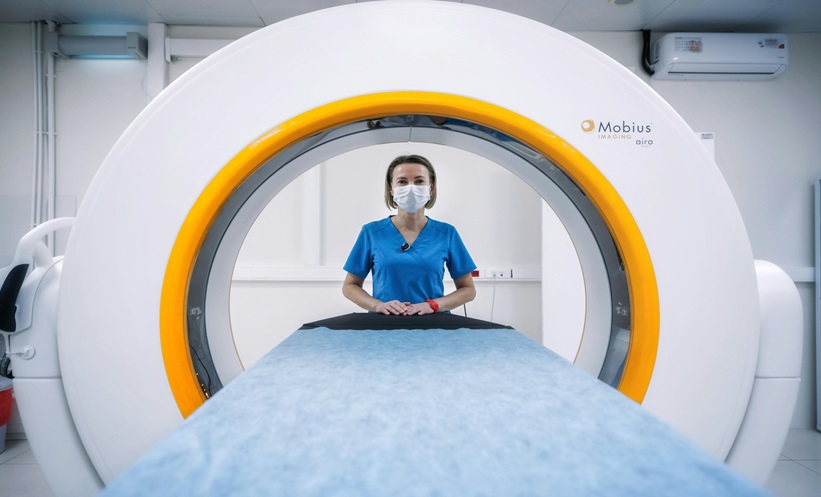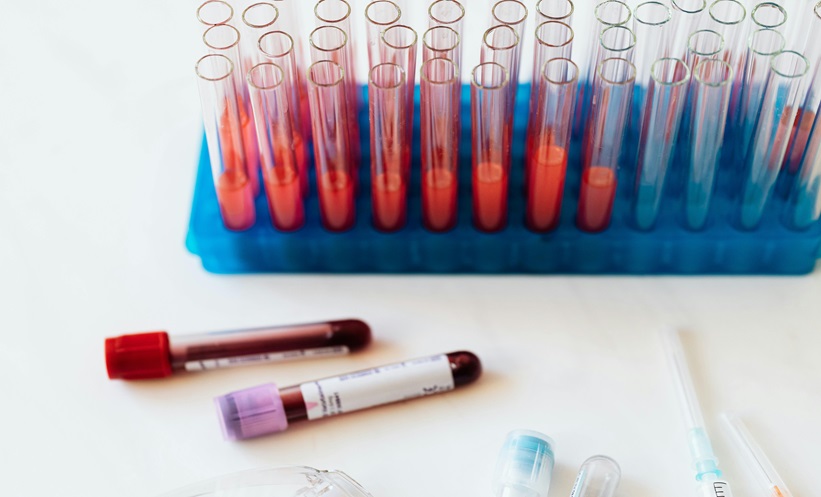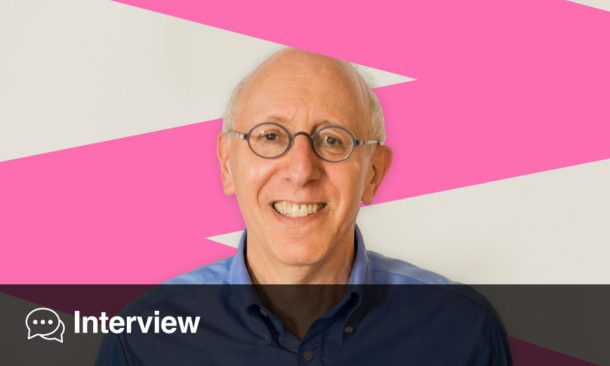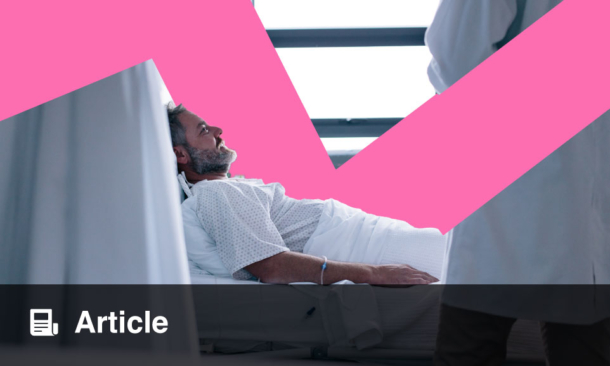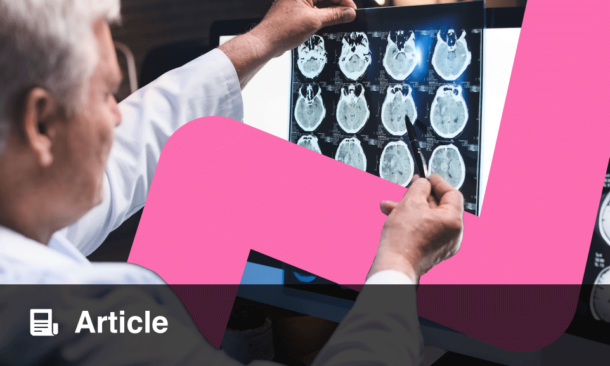Jacqueline A. French | Professor, Department of Neurology, Comprehensive Epilepsy Center, NYU Grossman School of Medicine, NYU Langone Health, New York, USA
Citation:Neurol AMJ. 2024;1[1]:53-59. https://doi.org/10.33590/neurolamj/FSDQ4926.
![]()
Neurology covers a broad spectrum of disorders. How did you come to specialize in the field of epilepsy?
I feel like epilepsy is the ‘window’ into the brain, because when people have a seizure, their onset tells you a lot about that area of the brain, and the way people describe their seizures is so interesting. What other field can you go into where you hear people describe: “At the beginning of my seizure, I hear all the music in the world at once?”
In addition, epilepsy has so many facets, that you can go down a number of different pathways depending on your interests. If you’re interested in pharmacology, phenomenology, patient outcomes, surgery, devices, electrophysiology, neuroimaging, and I can continue to go on, all of those touch on epilepsy.
Finally, I think another really important thing is that, not only can you make a profound difference in people’s lives, but the therapy for epilepsy is not rote. You have to really take the person and the options for therapy into account. There is a lot of individual decision-making between you and the person you are treating. I really like the fact that the relationships you make with people can last for decades. I started seeing people as young as 8 years old, and followed them into their 30s. So, that’s a lot of evolution, where you see the impact of the disease on people at different stages in their life. That part is quite fascinating to me, and also quite rewarding.
You are Founder and Director of The Epilepsy Study Consortium (TESC). What inspired you to set up this academic group, and how has the group directly impacted clinical practice and patient outcomes?
The TESC is a non-profit that tries to work with people who are developing either new therapies or new diagnostics to improve the conduct of trials and development, and speed therapies in the right direction for people who need them. There are probably two main impetuses for starting it over 15 years ago. First, back in the 90s, you could maybe run an epilepsy trial with 10 centers, all of them being the most prominent centers in the field, and each of the centers would enroll 10 patients or more. A decade later, when new therapies were available and had made an impact on people, and therefore seizure frequencies were lower, it would take 100 centers. Now, it takes more like 300 centers. The number of individuals that each center can enroll has dropped, and that means there are so many centers that can’t be the experts. And so, they needed some assistance in terms of finding and enrolling the right patients, because as this was happening, noise was building in the system, and the placebo responder rate was rising. We actually lost a drug or two that I think were effective drugs, because the placebo response overwhelmed the treatment effect. I think we have good reason to believe that by adjudicating patients, and by training all of the sites on the type of patients they should enroll, we’re keeping the placebo rate down, and we’re increasing the purity of the signal, so that people can really understand whether a drug is beneficial or not.
I think the other real impetus was that, back when I started doing trials, the operations part of the study was handled in-house by companies. As time went on, that was divested, and Contract Research Organizations came in, and these are not epilepsy experts. A lot was lost in translation. We felt that there needed to be some sort of intermediary there, who cared about what the outcome of the study was, that it was positive, and that the signal was true. Now, we are adjudicating for scores and scores of studies, both in the pediatric and adult realms. I do believe that the impact of the consortium has allowed new therapies, not only to get to the clinic faster, but to get to the clinic for the right indications; and again, for the study results to be interpretable, the signal to be more pure, and the placebo rate to be a little lower than it otherwise would be.
It has been extremely rewarding, and I think it’s rewarding for the people who work there. We are a small group, but we have seven people now working in the consortium. My executive director reminded me the other day that in all of the duration of time that the consortium has been in existence, not one person has left for another job.
You are also Chief Medical Officer at the Epilepsy Foundation. What does this role entail, and what are your hopes for the future direction of the organization?
I think that, working with the Epilepsy Foundation, I always keep the person with epilepsy, and their family, very foremost in my mind. I work primarily with the research group at the foundation, and we run a couple of meetings that really tie in well with the other hat that I have, at TESC. So, this allows us to sit at the table with the innovators of the drugs, the U.S Food and Drug Administration (FDA), potentially other agencies that are relevant, as well as the patient voice, very importantly, to make sure that all of those are incorporated into thoughts about improving development, and both what the patient’s need is, and what the family’s need is.
We just started a second research roundtable, for tracking and monitoring devices; right now, there is an explosion of devices, because people with epilepsy can’t really track their seizures very well. They may be unconscious, they may forget about the seizure, and if their loved one is not standing right next to them, then the loved one is constantly anxious that the person is having a serious seizure, and that there might be life-threatening consequences. So there is an urgent need for the ability for a device to either count seizures, or detect seizures, and then alert someone if it’s a serious seizure. Companies are really struggling right now in terms of how they are actually going to get to market, and how they are going to get reimbursed once they get to market. We have a second roundtable where we’re bringing not only the FDA, which is a really important aspect about how they get approved, but also payers, like Medicaid, Centers for Medicare and Medicaid Services (CMS), and others that ultimately have to see the value of these interventions. So that is going to be very exciting as well; we have 27 companies for the monitoring and tracking roundtable, and we have 29 companies for the therapeutic roundtable, which just demonstrates that there’s an enormous amount of activity in the field.
On top of that, our new initiative at the Epilepsy Foundation is that we are starting a patient research bootcamp. The idea is that we will bring in all varieties of voices from the community, including those from underrepresented communities, and explain to them a little bit about research, clinical trials, and the FDA, and turn them into research ambassadors. They will then be informed and able to contribute more, not only to telling the FDA and other organizations necessary things, but also to going back and talking to their own communities about why it’s important to enroll in trials, and why it’s particularly important for underrepresented communities to be represented in trials. We’re very excited about that initiative.
Our research roundtable also includes representatives from the other major players in the field, such as the American Epilepsy Society (AES), Cure Epilepsy, and the Rare Epilepsy Network, so that we can incorporate all voices into the considerations during each of these initiatives.
A novel way in approaching the treatment of epilepsy is to work towards disease-modifying therapeutics. What are the challenges associated with this type of therapy for epilepsy?
We’re all extremely excited about the fact that disease-modifying therapies are in the clinic as we speak, both for rare and common epilepsies. These trials will take an extremely long time. Usually, particularly for the non-seizure outcomes, it may take a year before you get to a point where you can measure a difference. One issue is that if you do a placebo-controlled intervention, you can’t ask somebody with active epilepsy, with so many therapies available, not to change any therapy for a year, particularly children. We’re considering enrolling children as young as 1, 2, or 3 years old; they will not have had time to fail all of the appropriate therapies that are available, and if they get randomized to the placebo arm, you can’t just say: “Okay, this child is now doomed to spend maybe 25% of their life waiting to find out whether they were enrolled in the active arm.” And of course, the active arm might not work.
We have to find ways to look at the seizure outcome in a shorter term, and then the non-seizure outcomes in a longer term. That’s something that we discussed at a previous research roundtable a few years ago on anti-epileptogenesis and disease-modifying therapies, in anticipation that they would be coming very soon. It was really interesting to hear our perception, even in terms of vocabulary: “What does disease modification mean? Does it mean anything?”
I think the other major challenge is that, particularly in the rare epilepsies, which tend to be in the category of what is called developmental and epileptic encephalopathies, often as a result of a monogenetic mutation, the children present with an enormous variability, both in symptomatology and severity. If we are trying to enroll them very, very early, we may not know what their course would be, even without therapy. So, we hope that variability, in what is likely to be very small trials, will not prevent us from reaching a positive outcome.
There have been circumstances in diseases where the FDA has said, “You can compare against a natural history,” but in those cases, they actually usually want a circumstance where children who are receiving the drug, for example, achieve a milestone that children who don’t receive the drug never achieve. So, if you look at a disease where a child will never walk, and now they walk, you can compare it to natural history; but when you have variability, then it’s very difficult to say: “Okay, no child will ever do X, Y, or Z.” So we have to really seriously consider that there may be things that we find, and we have to make sure that we identify them properly so that they are acceptable endpoints.
Currently, artificial intelligence (AI) is a hot topic across multiple medical and surgical specialties. Do you see a role for AI in diagnosing or identifying those at risk of developing epilepsy?
There are many groups that are currently investigating this. One problem I see with diagnosing epilepsy, is that somebody has presented to the medical system, and I’m trying to decide if they had a syncope, an epilepsy, or a migraine. There is a problem there, but another problem is that many people with epilepsy don’t realize that what they’re having is an epileptic seizure. When I talk to people about that, I say that the lay person with epilepsy only understands what I call the ‘television’ seizure, which is where you fall on the ground, you shake all over, and you’re frothing at the mouth. And most epilepsy starts not with the ‘television’ seizure, but with more subtle seizures, where you may have just a little bit of confusion, or déjà vu, or some strange twitching of your mouth; and people do not even present to the hospital, so it’s hard for AI to diagnose them.
A potential role is that when people try and Google those symptoms, epilepsy doesn’t even come up, so if there was some way that AI could identify what people are googling, and say: “Consider going to a neurologist for the symptoms,” that might help. I Googled ‘dreams while awake’ and I found a website called ‘The Doctor’s Lounge’, where people were talking about their symptoms. There was a person who was describing what I, as an epileptologist, was pretty sure was a seizure. And what I was very impressed with is that there were 100 people below saying: “Oh, my goodness, I have that too. You just described exactly what I have.” So it’s definitely out there.
I think the future will bring something at some point, but how to implement and train an algorithm for that will be quite challenging. There are also algorithms underway in the epilepsy space for differentiating seizures. A colleague of mine is using AI for differentiating epileptic from non-epileptic seizures. There are also other people who are working on algorithms, once epilepsy has been diagnosed, to differentiate whether an individual is going to have an easy course with treatment responsiveness, or a difficult course, because sometimes identifying treatment resistance, or inability of treatment to control the seizures, can take 2 or 3 years to conclude. In the past, I worked on the definition of treatment-resistant epilepsy, and it requires failure of two drugs, because a percentage of people can respond to the second that didn’t respond to the first, but that means that there’s a long delay. If you could identify them early, then you could give them maybe slightly more risky therapies, but therapies that are more likely to intervene or be successful under those circumstances. So, we’re working on all of those things with AI.
Having received multiple awards, including the 2017 American Epilepsy Society (AES) Lennox Award; co-authored over 200 publications; contributed to several novel clinical trial designs; and presented on the topic internationally, where do you see yourself in the next 5 years?
I’m going to continue to do the things that I’m doing, and the things that I am excited about. One of the things I think was most rewarding for me, in my academic role, was working on The Human Epilepsy Project, which includes three related studies that followed different groups of patients over a long period of time to see what their outcome was. We did one in newly diagnosed focal epilepsy, one in treatment-resistant focal epilepsy, and a third in generalized epilepsy. What really interests me is how the selection of therapy is so individual, and how we can do better at getting people to the right outcome faster, because sometimes it takes so long; and there are ways to do that with AI. But I am also very concerned that all of those three studies were done at academic epilepsy centers, because that’s where we enrolled patients, and 90% of people with epilepsy never see an epilepsy specialist. I know from my role at the Epilepsy Foundation, a lot more now than I ever did about how people with epilepsy receive care when they’re not being seen by a specialist. So, I think my goal for the next 5 years and beyond is to figure out ways to improve the care of epilepsy beyond the epilepsy center. We can spend 90% of our dollars spent on epilepsy on the 10% most sick, whereas we spend very little money, attention, or time on the 60% that actually have a fantastic opportunity to get on the right drug and lead a perfectly normal life, so I would like to focus on that.
One recent paper you co-authored was an International League Against Epilepsy (ILAE) position paper looking at the terminology used to describe medications in epilepsy treatment. What are the take-away messages for healthcare professionals from this review?
I think everybody in the epilepsy community has already switched over, they switched over even before the official wording change from “Anti-epileptic drug” to “anti-seizure medication” was official. We think it’s a really important change, because anti-epileptic drug implies that the drug is treating the epilepsy, and that is also an implication that seeps down into conversations with patients. If patients understand that their epilepsy is being treated, then they may not understand that medication is needed every day, forever, potentially in some cases. The way I try and describe it to my patients, as I tell them about the new wording, is to imagine the difference between having pneumonia, and treating the pneumonia, versus giving cough medicine. Anti-seizure medicines are basically like treating the cough, where the seizure is the cough. Seizures can be caused by any number of different things, and these medications, whether you have epilepsy or not and you’re just temporarily at risk for seizures, will suppress the seizure itself. You may get benefits from not having seizures in terms of your cognition and ability to function, but it is not a treatment for the underlying disease. Now we have to decide what the name of the other medication group is, that actually can modify the disease. We thought about disease-modifying epilepsy medications, or DMEMs, but we have to meet as a group and decide on an official name.
You previously chaired the American Academy of Neurology (AAN) and the AES committee that developed guidelines for the treatment of both newly diagnosed and treatment-resistant epilepsy. How did you become involved with this, and as Chair, what were your responsibilities?
It was probably one of the more formative things I did in my career. Very early on, when I was a junior faculty member, somebody from the AAN who was then Chair of the Guideline Committee, came and gave a talk at the University of Pennsylvania, Philadelphia, USA, which is where I was, and I was really interested in the process. I was concerned that maybe they didn’t have epilepsy expertise on the committee, so I sort of very brashly went up and said: “You should probably include an epileptologist.” So, I got on the committee very early, worked on the guidelines for anti-epileptic drugs, which of course, were widely disseminated and widely used. Ultimately, I stayed on the committee, became the Co-Chair, and then stayed on after that, so it was a very long period of time.
I saw lots of evolution of the committee, and it’s evolving even more now. It was a really good opportunity to learn two things. One, is that I learned some of the methodology that I really needed to learn, because, unlike today, when everybody gets a Master’s in clinical investigation, back in my day, there was no such thing, so you had to get your learning elsewhere. And this was like a Master’s in clinical investigation, because there was an enormous attention to all of the different aspects that made a study high quality. On the other hand, I also learned that a randomized, placebo-controlled, highly rigorous trial can only get you so far; and it doesn’t tell you the whole truth. The whole truth has to come from elsewhere as well. One of the things that I repeat over and over again is, if you think about a randomized, placebo-controlled trial, the best scenario where that would be useful is what I call the ‘seatbelt example’, where there is just one thing you want to know: is it better to do it, or to not do it. For example, either use a seatbelt, or don’t use a seatbelt. If you use a seatbelt, you reduce death; therefore, we should use it.
On the other hand, at least in epilepsy, and in many fields now, it’s not the seatbelt, it is more along the lines of: “How do I get from New York to Washington, with the choice of a plane, train, car, or bicycle.” You could do a study of a bicycle to get there, or no bicycle to get there, and you could say that a bicycle gets you to Washington, but that doesn’t mean that that’s the best way to get there. Then if you consider that you personally own a car, maybe a car is better for you, but somebody else doesn’t own a car, or somebody’s claustrophobic, or somebody has to get there faster. When I say a plane gets you to Washington, this is how much it costs; this is how long it takes; and it’s better than no plane, how does that tell me how I personally should get from New York to Washington? That is the constant struggle with guidelines. It’s so fascinating that the language is proscriptive and pre-determined. If something is positive in a placebo-controlled trial, if it’s very high quality evidence, the language used in guidelines says that you must offer it. It doesn’t say you must offer it only if it seems like it’s a good idea. If it’s slightly lower level evidence, the language suggests that you may offer it. But I always thought, are you supposed to stand in front of a person with epilepsy and say: “There are 20 drugs that I must offer you?” Guidelines may suggest the three newest, or disease-modifying treatments, but this doesn’t mean that those that aren’t on the list shouldn’t be offered. It becomes complicated, and guidelines are evolving. They are much more nuanced than when I first started, and they need to continue to evolve.
Finally, what do you feel are the unmet needs that require further research or attention to advance patient outcomes in the future?
Top on the list is trying to put together a roadmap for the non-epilepsy specialist to advise on the things they need to do in order to give the best care to someone with epilepsy, as it’s very difficult for them to find that information in terms of diagnosis, treatment, and other things such as adherence. I’m a huge proponent for discussing adherence with patients, and I don’t think that it’s discussed enough. For example, for other conditions, if someone takes 80–100% of their pills, they’re considered to be highly adherent. In epilepsy, 100–100% is highly adherent. So, if you’re going to say that somebody needs to raise their behavior to that level, then there need to be additional tools given to them. Adding to that, epilepsy is a condition where memory is a problem. Every single person with epilepsy should use a pill box, because if you don’t use one, you don’t know whether you’ve taken the medication or not. So, it’s these little things that make a difference, and most review articles do not discuss giving patients a pill box, and a rescue plan or rescue therapy if they need it; it’s very pragmatic, but very important.

